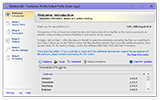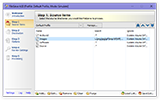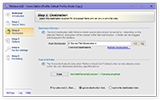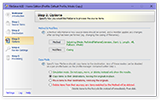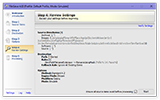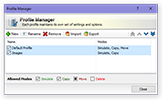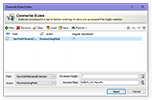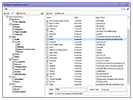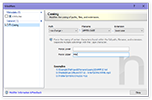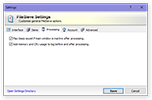What Does FileSieve Look Like?
Introduction
The main window is divided into five steps. Each step contains a particular set of features; this prevents having a single area cluttered full of controls and hopefully helps guide you through how to use the software. This is the Introduction page featuring general application information.Step 1: Source Items
The Source Items step allows you to choose which directories are to be processed and how. The Source Item Editor is available from this step, allowing you to customise things even further.Step 2: Destination
The Destination step is where you specify the root location you would like the items processed into, as well as setting up any rules within the Overwrite Rules Editor and choosing the "fallback" mode should any rules not match.Step 4: Review Settings
When you've finished setting things up, you can then get an at-a-glance overview of exactly what settings are active. TheVerify Settings link checks to see if everything is valid, and the Start button begins the processing.
Profile Manager
FileSieve allows the creation of Profiles. Each Profile contains its very own collection of settings and is entirely independent of the others. The Profile Editor allows you to add, edit, and remove Profiles as well as setting the permitted Copy Modes for "safe-guarding" reasons.Source Item Editor: Advanced Settings
After adding a new source item directory, it can customised further. Full regular expressions are supported for choosing which files within that directory are searched/ignored; a quick test can be performed using theMatches tab, and an additional advanced settings
tab is available for even greater control.
Overwrite Rules Editor
The Overwrite Rules Editor allows you to specify exactly how files that already exist in the destination should be handled, and which ones. Full regular expression support is supported.Copy Mode: Simulation
One of the major features of FileSieve has always been the ability to "simulate" a run to see if the result is what is expected. FileSieve 4 is no different; you can see exactly how the source items will be processed before committing to making real file-system changes.Method: Classification
One of the available methods is the Classification Method. By default, this Method will sort files based on their type into a hierarchy of folders, each named after the specific type of files it contains. The editor allows you to change exactly how files are classified using regular expressions.Method: Substring
Another of the available methods is the Substring Method. Substring allows you to created destination folders by taking a portion of the file that is currently being processed. There are options available to customise things further.Modifier: Casing
An example of a Modifier is Casing. Modifiers run after Methods, so the Casing Modifier is used to change the casing of created folders' names and processed files' names.Settings: Processing
General application settings are available, such as theProcessing area where you can tailor the way
FileSieve processes items to your requirements.
